
Efficiency gains on the warehouse floor, even small ones, are essential in keeping overhead costs manageable and profit margins high. This is especially true the larger your warehouse gets.
We’ve put together 16 effective warehouse productivity tips that will teach you how to run an efficient warehouse by minimising wasteful activities and optimising your warehousing processes.
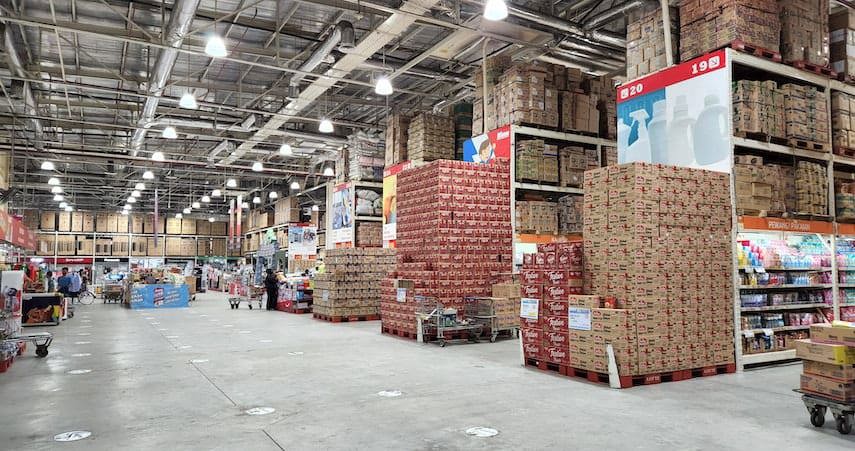 To run an efficient warehouse, you'll first need to optimise its layout and the equipment you use to manage goods.
To run an efficient warehouse, you'll first need to optimise its layout and the equipment you use to manage goods.
How to improve efficiency inside the warehouse
Let’s begin with the obvious place to optimise: your warehouse.
More than 210 million square meters of new warehousing space will be required by 2035, according to business software review company G2. As your warehouse grows in size, so will the need for more efficient systems and processes.
1. Optimise your floor layout and traffic flows
Right person, right equipment, right materials, right time: That’s the target for a warehouse environment.
Optimising your warehouse arrangement for efficiency will ensure that your premises are set up to minimise travel time and maximise output.
Top tips for constructing an efficient warehouse floor layout:
- Make it easy for staff to retrieve best-selling items or most-used components by storing them closer to the packing area while keeping slow-moving stock out of the way.
- Try to create a single flow of goods to reduce doubling back, bottlenecks, and obstructed picking paths.
- Minimise the distance that employees must travel to get to the materials that they require.
- Don’t just think horizontally: your warehouse likely has vertical space that could be optimised for storage.
- Ensure there’s enough space for forklifts, dollies, and other equipment to operate safely and efficiently.
- Mitigate congestion at your entry or exit point. Are customers, staff, and delivery drivers competing for the same space? This can create bottlenecks and raise the risk of accidents.
Learn more about optimising your manufacturing facility: How to Create a Visual Factory for Manufacturers
2. Utilise space-efficient containers, pallets, and racks
How you store goods around the warehouse has a major impact on efficiency.
Consider the specific size, shape, and type of bins or pallets you’ll need throughout the year. Make sure you will have enough to meet demand.
Inventory forecasting can help you predict the optimal min/max stock levels for each SKU throughout the year. This information can be used, along with product dimensions, to determine how much storage space will be required and whether extra containers and pallets need to be ordered.
Appropriate racking is also essential in optimising vertical storage space. Consider what you’re intending to store vertically and how often staff will be accessing those goods.
Lastly, make sure you have the necessary equipment to safely move and store stock. This will depend on the size of your facilities, but forklifts, pallet jacks, and hand carts are common warehousing tools for this job.
3. Use inventory management software to improve stock visibility
Stock visibility is essential for efficiently tracking and managing goods in a warehouse. It allows you to understand where your goods are, where they’re going, and what needs to happen in between.
A modern inventory management system provides total visibility across all your tracked items.
The software acts as a hub for your warehouse, recording every item that comes and goes, where they’re being stored on the premises, who supplied them, and important specs about the items.
Inventory management software should be supported by trained staff that understand all the functions necessary to run your business at maximum efficiency.
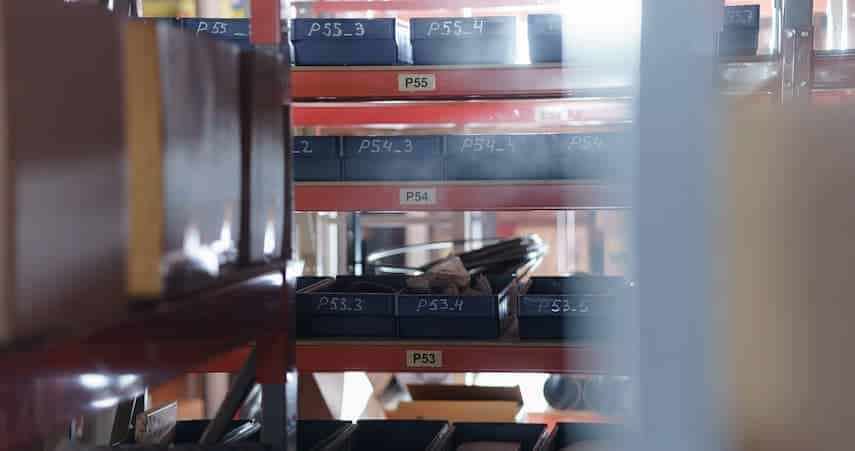 In order to run an efficient warehouse you need to select the optimal size storage containers for each SKU.
In order to run an efficient warehouse you need to select the optimal size storage containers for each SKU.
4. Improve accuracy with automation tools and technology
Warehouse efficiency is quickly improved when the right equipment is implemented and used correctly by trained staff.
Barcode scanners, for example, greatly reduce the risk of data entry errors and inaccurate records. They’re also much faster to use than inputting product information manually, allowing you to get more done in less time.
Some warehouses may also benefit from voice-picking systems. These are automated systems that send voice commands to pickers, via headphones. Tasks are optimised based on efficiency. Pickers complete their tasks and then confirm and update the system through voice recognition technology.
LED lights and alphanumeric displays improve accuracy by making it easier to find items and store them in the correct locations. You can organise your warehouse right down to individually numbered bin locations and hook everything up to the automated system. When an order comes through, pickers are guided to stock locations by voice, lights, and/or LED signage.
- Learn more: 10 Warehouse Order Picking Tips
5. Choose the right picking method
The size of your warehouse and the volume of your orders will define how your pickers should go about their work. The right picking method is one that enables you to fulfil orders fast, with minimal errors.
The five most common warehouse picking methods are:
- Single order picking
- Batch order picking
- Cluster order picking
- Wave order picking
- Zone order picking
You can learn about these in depth by reading our warehouse picking methods guide.
The following factors will determine which method is most appropriate:
- Warehouse size
- Order volumes
- Risk of human error
- Time required to train employees
- Costs
6. Optimise workstations
An optimised workstation can lead to improved performance by reducing the time spent searching for things like tools, paperwork, and labels.
Broken, poorly functioning, or disconnected equipment can all create workflow bottlenecks and harm your productivity. Create routine checks to ensure your tools and hardware are set up correctly and operating at their full capacity.
Mobile workstations can further improve performance by enabling staff to move projects and works-in-progress around the warehouse as required, along with any tools and other equipment they need.
- Improve warehouse performance: 12 Warehouse KPIs You Should Be Tracking Right Now
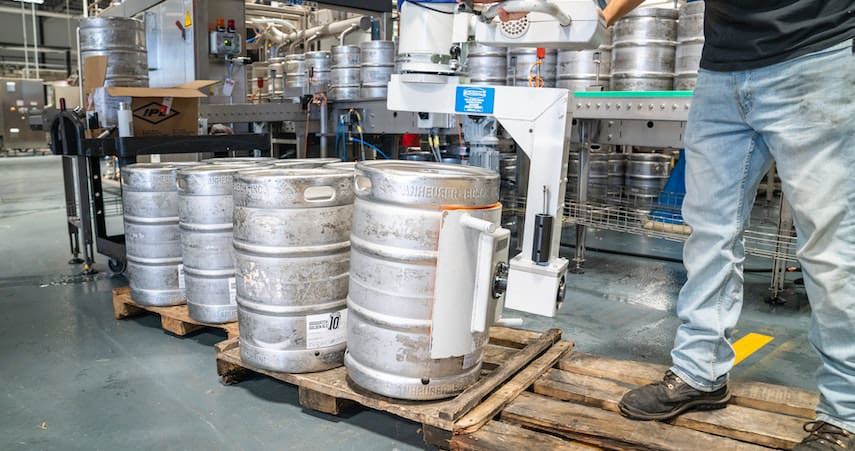 Keep paths clear and use the right warehousing equipment to ensure efficiency in your daily warehouse tasks.
Keep paths clear and use the right warehousing equipment to ensure efficiency in your daily warehouse tasks.
7. Start using SKUs and batches
Product tracking can lead to better more efficient problem-solving, particularly around missing or incorrectly shipped goods.
Batch and serial number tracking improve inventory visibility, providing up-to-date stock movement insights and costs at a glance.
Barcode scanners and warehouse inventory management software are essential tools to help with product tracking. Create bin locations within your warehouse to enable precise location tracking for every SKU.
- Learn more: A Complete Guide to Stock Keeping Units (SKUs)
8. Enhance your fulfilment and shipping processes
By optimising your fulfilment processes, you can run a more efficient warehouse and improve customer satisfaction at the same time.
Let’s start with packaging.
Incorrect packaging can lead to damaged goods and increased costs with carriers. Time spent cutting boxes down to the right shape or building makeshift packages for your products is time that could be better spent growing the business.
Forecast your packaging needs based on historical data to ensure you order the correct sizes and quantities in advance of fulfilment. Look for sustainable packaging solutions as a way to differentiate your products from your competitors.
You should also look to optimise your shipping strategy.
There should be well-known workflows in place to ensure that ready-to-ship orders are placed in the optimal location for collection, without obstructing other employees’ work.
Cross docking is one shipping optimisation solution that can improve warehouse efficiency.
Incoming goods are offloaded onto a cross-dock, then immediately loaded onto waiting trucks to take them to their next destination. Stock remains in the warehouse for a shorter period, reducing carrying costs.
9. Keep your business secure
Theft can negatively impact warehouse efficiency and operations. Lost goods cost money, and tracking them down (or investigating a theft) takes time away from other business activities.
Some quick tips to improve warehouse security:
- Increase the physical security of your premises. Prevent break-ins by installing reliable security equipment, such as cameras, lights, and locks. Good security equipment can deter opportunistic criminals and make your warehouse a less desirable target.
- Improve the digital security of your business. Ensure your customer data, employee information, financials, and day-to-day business operations cannot be harmed by doubling down on cybersecurity and staff training.
- Ensure your operating procedures are aligned with your security procedures. Consider the way your company culture and work processes intersect with an element of security. Make sure that your security policies are up to date and have been clearly communicated to each employee.
How to improve warehouse staffing efficiency
People are your most valuable asset, according to the old adage. But equally, they can become your greatest liability – especially when insufficient training or toxic company culture is involved.
Let’s go over a few best practices for optimising warehouse staff efficiency.
10. Update training materials and employee onboarding
As you make efficiency improvements, review your training materials and new staff onboarding processes. Update as required based on any changes you’ve implemented to the way things are done.
You should also audit your existing training systems, particularly around processes that are difficult or confusing for new employees.
The best way to improve staff training is to ask those that have been through it. Speak to your employees and get their feedback on which parts they found clear and which parts were difficult or lacked sufficient detail. Present the remedied training to these same staff to confirm you have made the right improvements.
In addition to more competent employees, you'll also improve employee loyalty, reducing your risk of high staff turnover and internal theft.
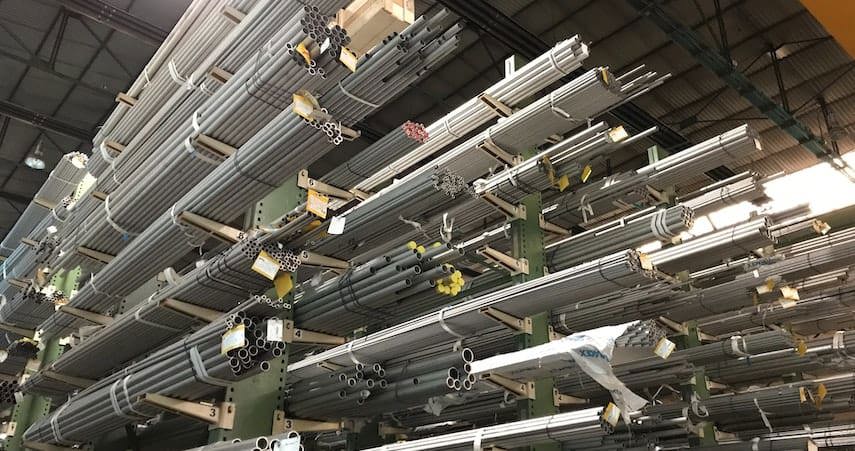 Utilising vertical storage space for larger items is an effective way to run a more efficient warehouse.
Utilising vertical storage space for larger items is an effective way to run a more efficient warehouse.
11. Address your company culture
No matter what the ‘rules’ say, people usually end up following whatever most of their peers are doing. This means that your company culture – how employees behave at work and feel about the company – is contagious.
When a company’s culture is toxic, it’s much easier for new employees to slip into those unacceptable ways of behaving. Conversely, a positive company culture encourages new staff to respect the rules of the workplace and perform in a way that’s beneficial to themselves and the business.
Consider what the ‘banter’ looks like in your staff room. Does any of it cross over to the realm of bullying and harassment? Are leaders stepping up to call this behaviour out, and letting everybody know what is and isn’t acceptable?
Ensure all employees feel safe and are held accountable whenever they behave in a way that goes against the company’s cultural standards.
12. Take health and safety seriously
Accidents happen. In warehouse environments, workplace injuries affect around 1 in 20 employees according to 2021 data from the US Bureau of Statistics.
Ensure you have the right safety plans in place – and that they’re clearly communicated to and understood by all employees.
Your standard operating procedures (SOPs) for health and safety should cover:
- How to use all equipment safely
- Who to go to for further training
- How to spot potential hazards
- How to file an incident report
- What to do in case of a fire or dangerous weather event
- Who to report hazards and accidents to when they occur
- What to do in the event of an accident
- What happens to someone after an accident occurs
Implement an accident review process to analyse every incident, identify the cause of the incident, and take measures to mitigate the risk or, ideally, prevent it from ever happening again.
How to improve warehouse management efficiency
The final piece to the puzzle is warehouse management. This refers to the top-level focus of operating the warehouse and your organisation in general.
These final tips will help you better set up and manage your day-to-day warehouse activities.
13. Get the right leaders for the job
Leadership roles typically come with higher wages. For employers, it can be tempting to try and cut costs by hiring less-experienced, more affordable leaders. However, this often turns out to be more costly in the long run – especially if it doesn’t work out, and you need to go through the hiring process multiple times.
Instead of looking to save money right now, focus on hiring the best person for the job. Effective leaders can quickly get your business into the right shape, ultimately leading to greater efficiency and profitability.
If you’re hiring a new leader or promoting from within, take extra time to quiz them on their leadership strengths and weaknesses. Do they fit with your company culture? Will your employees listen to them?
Ask for anecdotal examples of how they’ve resolved similar problems to the ones you’re currently facing.
If you decide to promote from within, keep in mind that on-the-job skills are not the same as management skills. You may need to provide a leadership training course to give them the tools and knowledge they need to lead effectively.
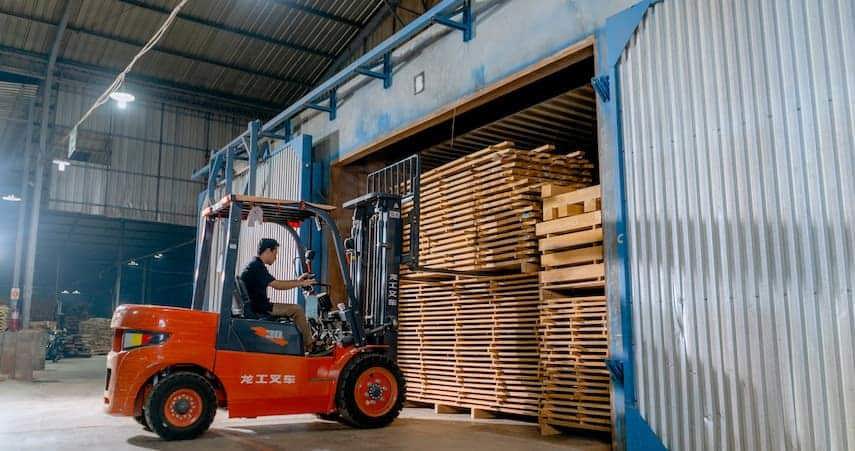 Get your staff onboard and make sure they feel heard to help improve warehouse efficiency and productivity.
Get your staff onboard and make sure they feel heard to help improve warehouse efficiency and productivity.
14. Set clear organisational goals
Employees work more efficiently when they fully understand their role within the company – and the reason it exists.
Communicate your overarching business strategy to all staff. Make it clear how their individual tasks contribute to the strategy, and why they’re so important.
There’s good reason for this level of transparency. When a staff member feels useful to the company and sees the purpose behind what they’re doing, they’ll find it easier to push through less-glamorous tasks. They might even know of a more efficient way they could be doing that job, once they understand the top-level goal it supports.
You should also be open about future intentions and goals for the company. This will help team leaders steer their people in the right direction and prepare staff for any future changes while encouraging collaboration and ideas.
15. Acquire feedback from your people
The longer you’re up in the office and off the floor, the more likely you are to become detached from the modern realities of life at work in your business.
When it comes time to optimise the warehouse, that lack of knowledge may find you ill-equipped to make the correct decisions.
The solution to ignorance is education: Speak to the people that are out on the warehouse floor every day. Listen to their grievances and water-cooler complaints. While they may not be qualified to offer solutions, they’re experts at knowing what efficiency problems exist because they’re the ones suffering the consequences.
Use anonymous employee surveys or complaint boxes to gather honest information and encourage employees to speak their minds.
16. Get into a cycle of continuous improvement
Improving the efficiency of your warehouse shouldn’t be a set-and-forget process. Technology changes, equipment breaks, staff leave.
Treat your warehouse like a never-ending project. Find ways to turn your improvement process into a loop, not a line. Filter learnings back into a new stage of planning, closing the loop.
To run an efficient warehouse perpetually, you’ll need to continuously look for new ways to improve your facilities, cut waste, and maximise productivity.
